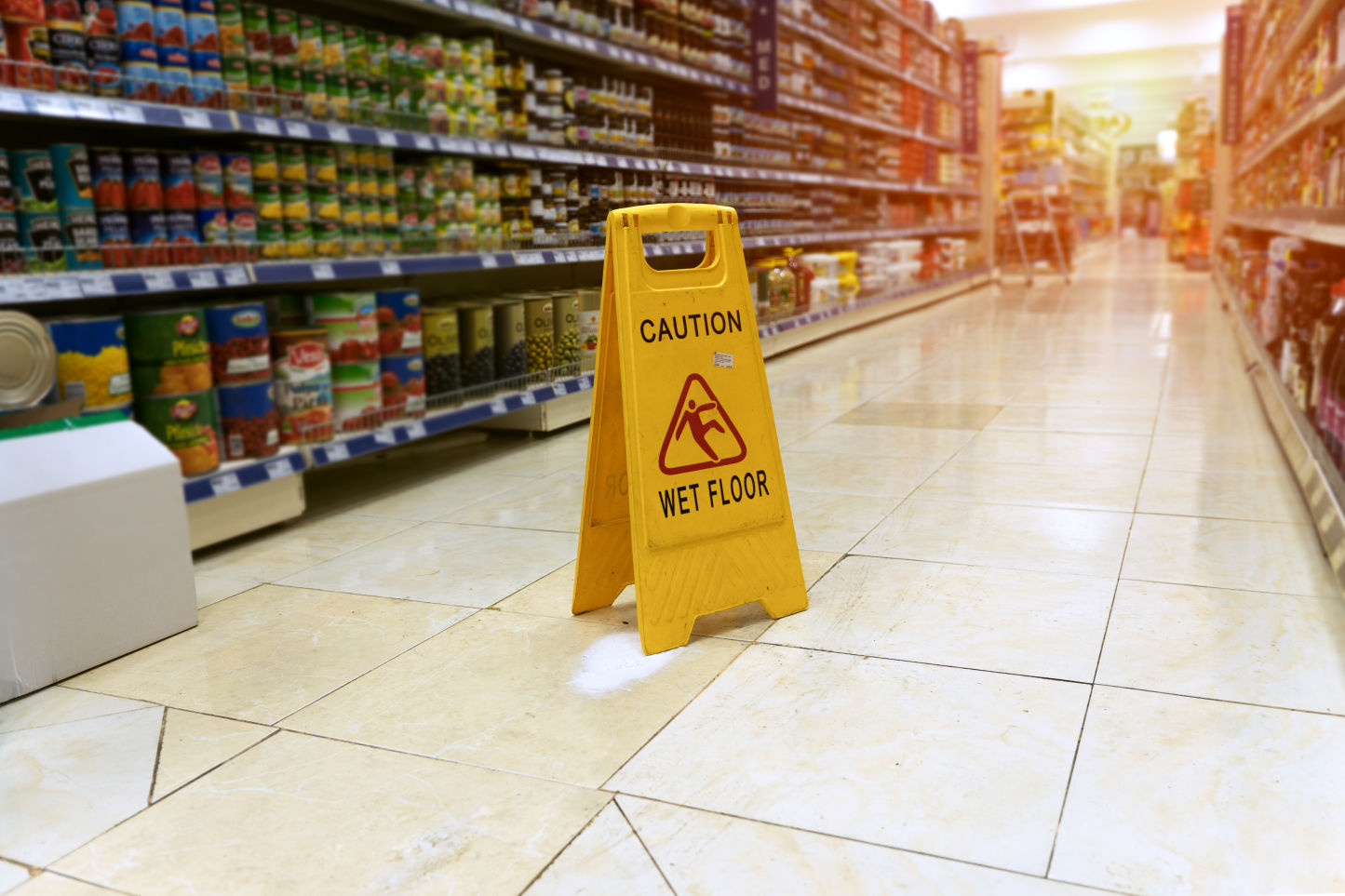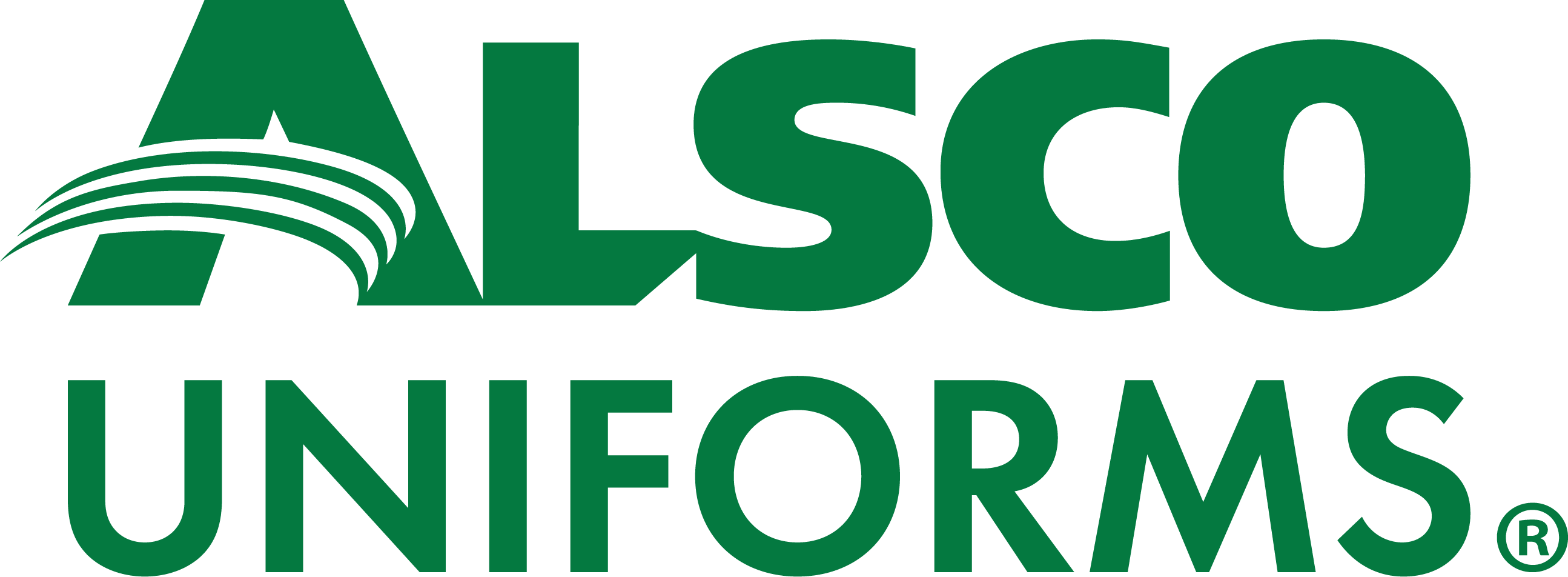
Slipping, tripping or falling in the workplace is one of the most common causes of claims for worker’s compensation, missed days at work and lost productivity for a business.
It is important to prioritize the health and safety of employees to protect their abilities to work and provide for their families. In addition, prioritizing health and safety helps businesses to keep their doors open, providing jobs and services to local or global communities.
The good news is that employers can implement many simple policies to increase their ability to protect their employees and businesses.
Here are the most effective ways to help prevent slips, trips and falls in your workplace.
1. Keep All Walkways Clean & Dry
Spills are one of the most common causes of slip and fall accidents in the workplace. A spill could be related to the work being done, especially in restaurants or packaging plants that work with liquids, but it is equally common for an employee to injure themselves because of a random unexpected spill.
An employee’s spilled soda, a leaky faucet in the restroom or rainwater tracked in from the outside may be even more likely to cause a slip and fall accident because industries that work with liquids daily often have the floor covered in mats that provide a gripping surface and allow liquids to fall through to prevent slips. Other industries may be more susceptible to employee injury simply because employees are not used to being on high alert.
Keeping walkways clean and dry means the following:
Sweeping and mopping regularly at the end of each day or shift
Cleaning spills immediately and drying the area thoroughly
Deep cleaning floors regularly to catch sticky spots, damaged areas and other issues
Removing any debris that falls onto a walkway immediately and securing it so it doesn’t fall again.
2. Clearly Mark Hazardous Areas
Some parts of businesses are more susceptible to slip and fall hazards. For example, restrooms may be at a higher risk because of water dripping from sinks and off people’s hands as they move to dry them.
Similarly, break rooms where employees regularly eat and drink may be at a greater risk for spills.
Areas of a warehouse or business where items are stored and frequently accessed during the day may also pose a hazard. If items are not put back correctly or are accessed in a rush, items on shelves could be more likely to fall.
If your business has any areas where it is common for items to fall off a shelf or for spills to occur or where injuries have happened in the past, clearly mark these areas with directions on how to prevent accidents. Additionally, if a spill occurs or there is damage to a walkway that cannot be immediately repaired, secure the area with hazard tape, signs and other unmissable notifications to inform everyone that there is an immediate risk of an accident.
3. Post Reminder Signs About Spills & Hazards
In restrooms, employee break rooms and areas where employees may handle hazardous materials or liquids, post signs that clearly outline expectations for safety purposes. The idea is to not only present these procedures to employees when they are hired and trained but to continually remind them how best to protect themselves and their fellow employees when they are in areas where they may be more likely to read the signs.
Additionally, post any updates to procedures. This helps to ensure everyone understands how to mitigate slip, trip and fall risks in the workplace.
4. Securing Items at Risk of Blocking Walkways
Most businesses have shelves, posters, drawers and cabinets lining the walls so employees can store personal and business-related items. When in a rush, employees may not prioritize safety concerns such as closing drawers and cabinets, placing items carefully on shelves or noticing whether a shelf or sign is loose and about to fall.
It’s important to schedule regular checks of these items to ensure everything is appropriately tacked, taped and secure. Then, encourage employees to follow through on their actions by closing drawers they open, securing stacks of items as needed and reporting any issues that pose a potential problem, like loose shelves or signs falling off the wall.
Similarly, secure all cables or wires that cross a walkway and cannot be diverted up a wall or across the ceiling with bright plastic coverings. Nail them in place so they are less likely to cause an employee or customer to trip or fall.
5. Maintain Bright Lighting Throughout the Workplace
Throughout the workplace and in any business, bright lighting is a must unless dimmer lighting is required for ambiance for customers. In all work areas, however, the lights must be bright enough to illuminate the work area and the floors so hazards can be clearly identified before it’s too late.
This can be accomplished in the following ways:
Replace dim or faulty light bulbs with bright bulbs as soon as they are no longer in working order.
Replace and repair wiring and switches as needed to ensure all parts of the building are brightly lit.
Create a schedule in which all bulbs are checked and replaced to ensure any missed bulbs are replaced as needed, prioritizing big electrical projects.
Create protocols for employees that let them know lighting is a priority so they do not inadvertently create a hazardous environment by turning off lights or ignoring broken or dim bulbs.
6. Remove, Repair or Replace Hazardous Flooring
In many cases, slip, trip and fall issues arise not from a spill or item in the walkway but from the flooring itself. Old wooden floors may warp over time, and nails may pop out of place, creating dips in the floor or items that can snag on shoes and cause a fall.
Similarly, carpets exposed to flooding or high-volume spills may warp. Also, improperly installed carpets may wrinkle or bunch, creating a trip and fall hazard. Missing or broken tiles or damaged linoleum can create an uneven floor surface that may also contribute to falls.
To maintain flooring over time and limit the frequency of slips and falls, it is important to do the following:
Mark off any areas that are damaged and in need of replacement or repair.
Remove popped nails or broken pieces of tile or linoleum that may be sticking up.
Prioritize big repair projects like replacing flooring even if doing so disrupts the workflow.
Schedule regular checks of flooring to keep an eye on areas at risk of becoming hazards and identify any unnoticed issues.
7. Require Nonslip Footwear
One of the best things employees can do is wear nonslip footwear that protects their body and enables them to work to their best ability without hindering their movement or putting them in danger. Dress shoes with rubber soles that grip to help prevent falls are available for employees who must work with the public in a corporate environment or an atmosphere where nicer dress is expected.
Shoes must be replaced when they begin to break down or lose their tread. Making this a requirement of the workplace’s uniform can protect employees from falling and protect their feet from pain and injury over time.
8. Create Employee Policies That Prioritize Safe Habits in the Workplace
Management should prioritize the safety of employees and customers in the workplace by continually keeping an eye on issues that could contribute to a slip and fall injury. But it’s also important for employees to know how best to protect themselves and their customers.
Create a comprehensive policy on safety habits and choices, and post signs regarding the most important or often forgotten policies. This can help to ensure employees know the best practices to protect themselves on the job.
Employee safety policies and training may cover the following:
What to avoid on the job, such as no running or roughhousing, no use of mechanical equipment unless properly trained and no working while under the influence of any substance
What to look for that could potentially be a risk
How to handle simple problems that could lead to injury, like managing a spill or debris in the walkway
How to report dangerous issues that require support from management or a higher degree of repair
Prioritizing Safety Means Streamlining Job Requirements
Often, safety measures are overlooked or ignored because management is too busy handling the day-to-day issues that arise while running the business. Constant issues like addressing customer care, managing employee schedules and concerns, maintaining stock and improving sales and profit margins often trump spills or potential trip, slip and fall hazards.
At Alsco, we can help management streamline their responsibilities, giving them more time to focus on what’s really important. We offer services to refill and maintain soap dispensers that may crack and leak as well as paper towels, toilet paper and air fresheners. We can also make sure employees have the cleaning supplies they need to maintain their workspace safely and ensure rugs are in the right places and always clean and free from tears or stains. We can also restock, clean and replace employee uniforms as needed.
All of these tasks take time. Our goal at Alsco is to take these off the to-do list so management can focus on other tasks that move the business forward.
Find out more about how Alsco can help your business protect itself and employees from slip and fall accidents when you contact us today. You’ll be pleasantly surprised at how much time we can save you.
References
Prevention of Slips, Trips and Falls. Canadian Centre for Occupational Health and Safety.
Young Retail Workers: Slips, Trips and Falls. Centers for Disease Control and Prevention.
Slips, Trips & Falls. Timber Productions Manufacturers Association.
